The following guide has been created for you by the Student Learning Advisory Service. For more detailed guidance and to speak to one of our advisers, please book an appointment or join one of our workshops. Alternatively, have a look at our SkillBuilder skills videos.
Why take notes
- Note-taking helps you concentrate on what you are reading, watching or hearing; it helps you to understand and organise new information and ideas, and consider how they relate to each other.
- Notes are a permanent record of information that will help you prepare for seminars, presentations, assignments and examinations.
- Effective notes from lectures should give you start point for undertaking your own research.
- Notes taken from feedback given to you by tutors/markers offer a record for areas of improvement.
- Effective approaches to note-taking is invaluable in helping you avoid plagiarism and study more efficiently.
Do
- Note relevant information that will aid your understanding, knowledge development and memory e.g. key terms, concepts, definitions, names formulas etc.
- Always record your sources – date, subject, lecture, title, author, page number etc.
- Use “speech marks” or a different coloured pen to identify direct quotations.
- Allow space to fill in gaps in knowledge or information
- Update your notes where necessary with additional material and research
- Use colour, shape, dotted lines, to highlight, link, group ideas.
- Keep separate notebooks/binders/folders for each course – don’t muddle them
Don’t
- Copy word for word unless explicitly told to do so or planning to quote and reference fully.
- Rely on PowerPoint handouts, make your own notes in addition. You are expected to undertake independent research for assignments, that does not mean quoting from lectures.
- Worry if you miss something, aim to get the big picture rather than all the details, you can add details where relevant after.
- Write down more than you would want to read again.
What to note
Think about what information you need to be able to understand the topic and be able to research the topic further. Generally the kinds of information you are looking or listening out for are:
- Core discussions & debates
- Terminology & definitions
- Facts such as dates, events, people, data
- Concepts/themes
- Theories
- Legislation
- Equations/formulae/rules
- Processes/sequence of events
- Case studies/ examples/passages
Methods of note-taking
There are a number of different ways in which you can take notes: linear, keywords, timeline, flowchart, matrix/grid, mindmap/spidergrams, herringbone. Each method has its advantages and disadvantages:
Linear notes (example below)
Advantages
- Simple and familiar approach.
- Good for listing information.
Limitations
- Order tends to follow the source.
- Difficult to go back and insert additional information.
- Repetitive format.
- Not always possible to link ideas and get bigger picture.
- Can reduce complex issues to lists.
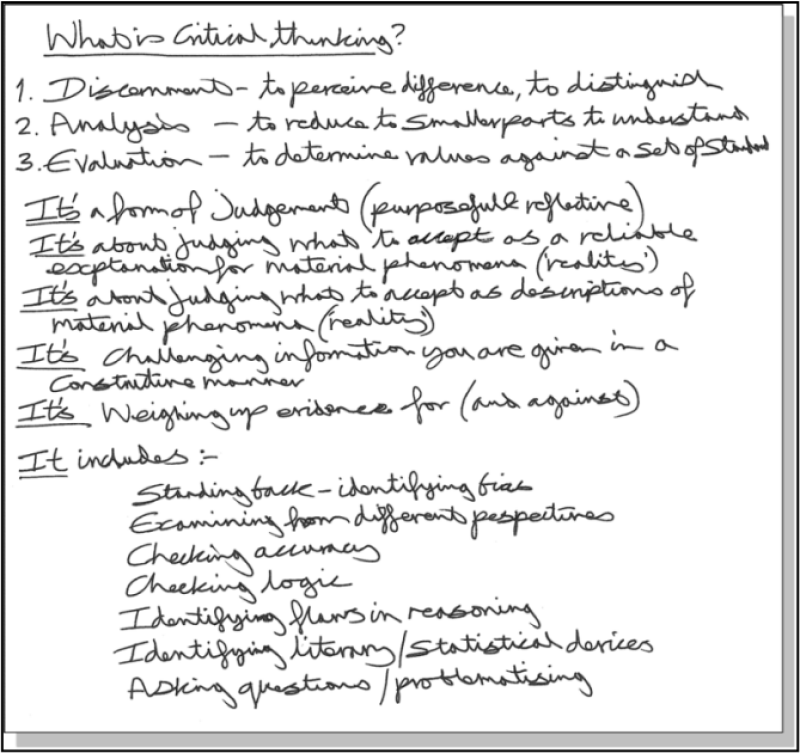
Keyword notes (example below)
Advantages
- Presents information in a clear and simple manner.
- Good for organising information into categories and hierarchies.
- Structures information into a memorisable format.
Limitations
- Can segregate information in an artificial manner.
- Can reduce complex issues to lists.
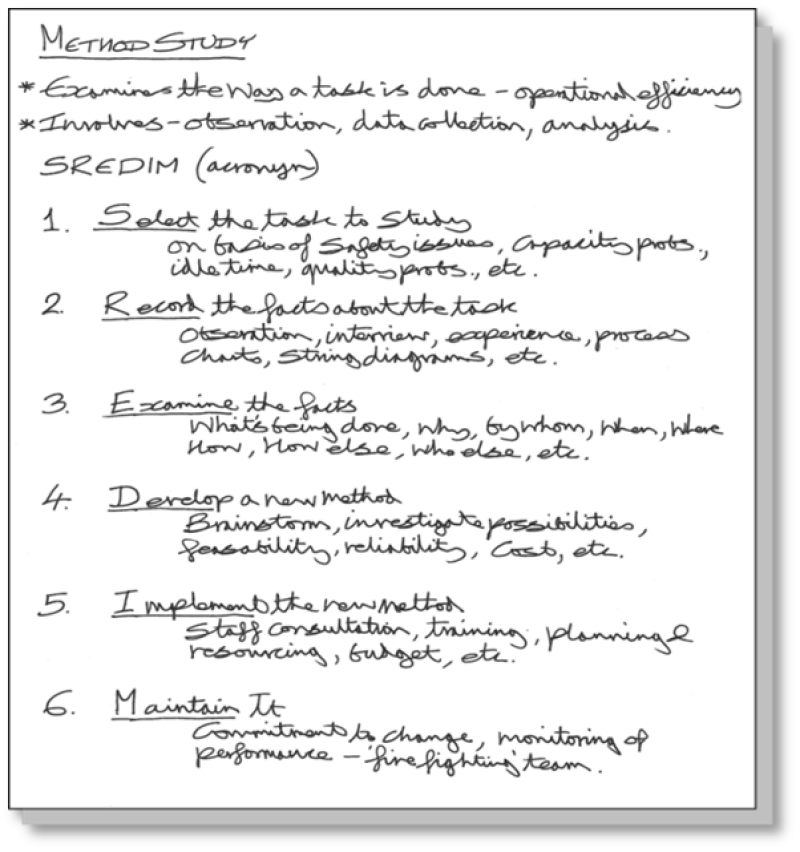
Timelines (example below)
Advantages
- Good for clarifying the sequence of complex events/ideas/etc.
- Clear, simple and logical.
- Good for structuring information into a memorable format.
Limitations
- Can over-simplify a more complex picture.
- Tends to be very descriptive.
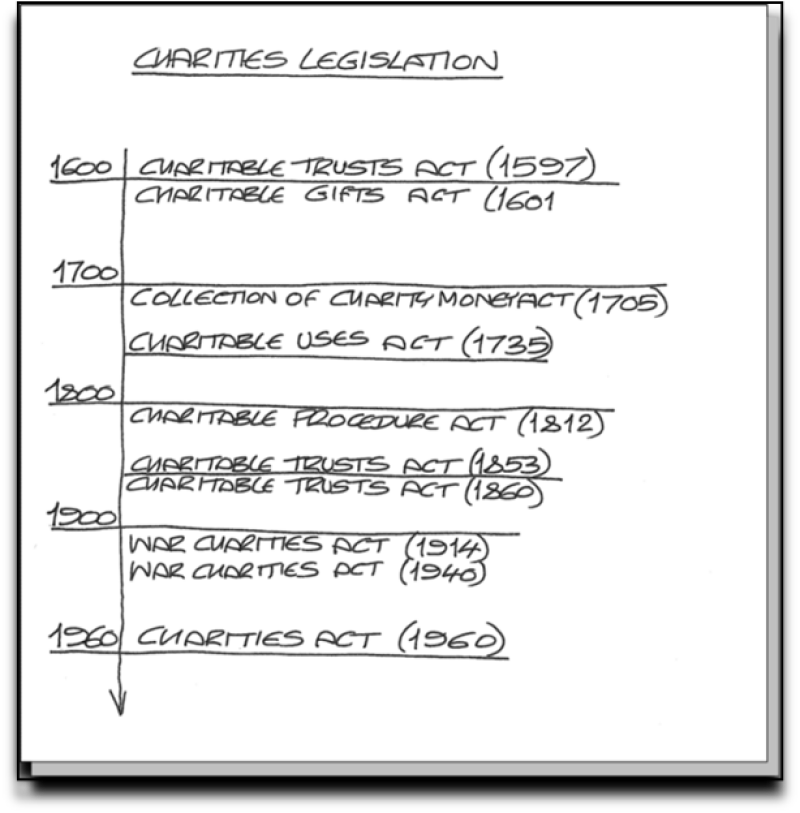
Flow-chart notes (example below)
Advantages
- Presents complex processes/ideas in a simple, easy to understand manner.
- Can help to reduce volumes of text.
- Links ideas offering a bigger picture, thus encouraging critique.
Limitations
- May require practice.
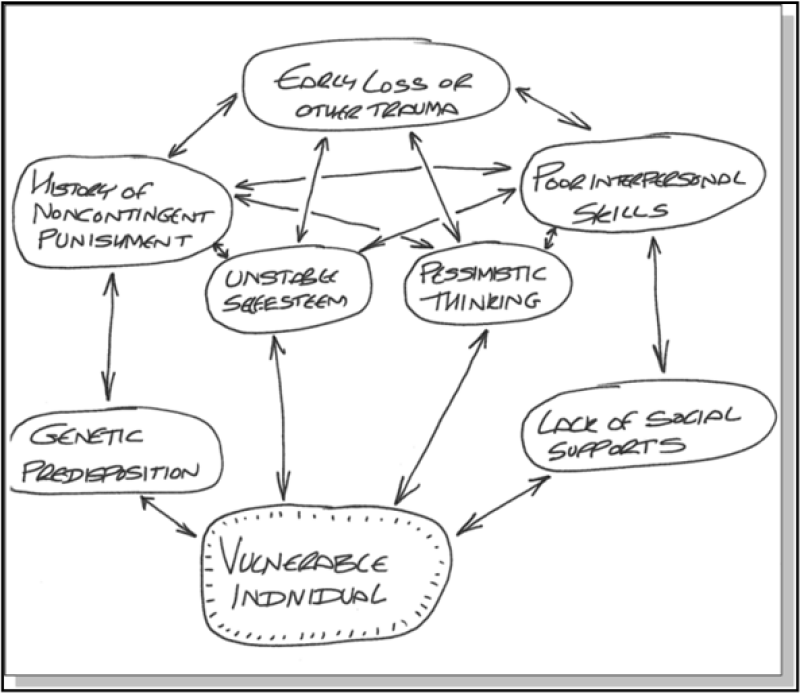
Matrix/grid notes (example below)
Advantages
• Good for understanding a topic thematically.
• Good for deconstructing complex information.
Limitations
• Danger of categorising complex information in overly simple positive/negative terms.
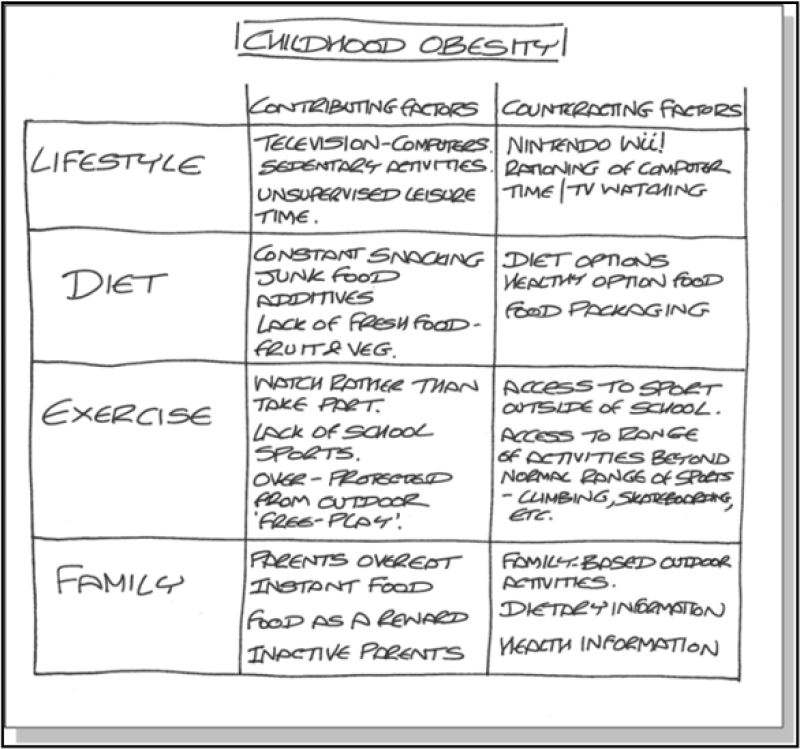
Mind maps/spidergrams (example below)
Advantages
- Generates processed information.
- Highly personalised.
- ‘Whole brain’ activity.
- Can reduce large volume of text to simple graphics.
- Easy to arrange and link information.
- Good for showing connections/ big picture.
- More engaging than copying.
Limitations
- Can become confused.
- Requires practice.
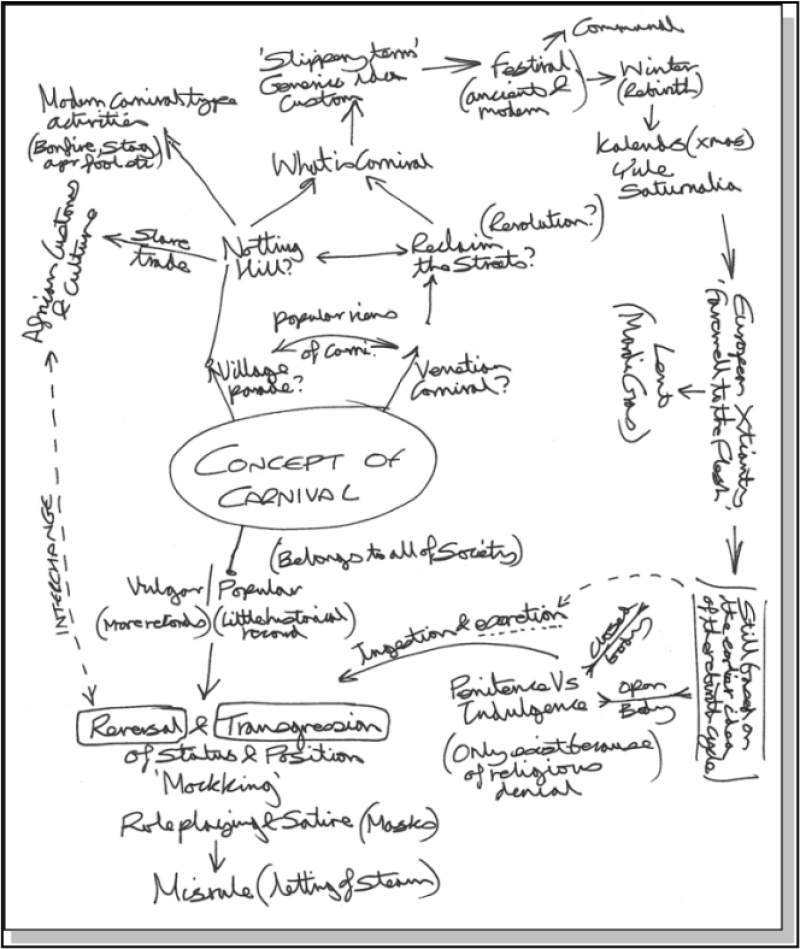
Herringbone notes (example below)
Advantages
- Clarity.
- Good for compare/contrast type approaches to a topic.
- Good for setting out arguments/ opposing viewpoints.
Limitations
- Danger of categorising complex information in overly simple positive/negative terms.
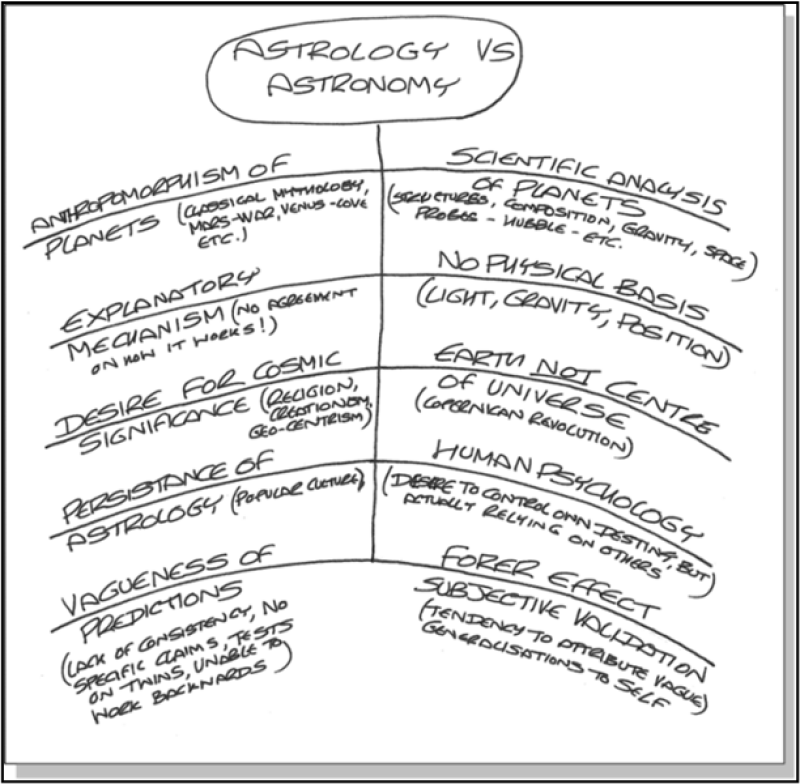
Making the most of your notes
If
you just ‘file and forget’ your notes, they’ll be of little value to you in the
future. To make your notes an effective resource, spend time processing the
information you have collected while it’s still fresh in your mind. This may
involve:
- Undertaking research and filling in gaps in knowledge (annotating or summarising)
- Highlighting keywords, themes and topics
- Recording questions that the notes address or raise.
The Cornell method encourages you to make the most of your notes as it promotes reflection, consistency and accurate record keeping, any style of note-making can be used with Cornell:
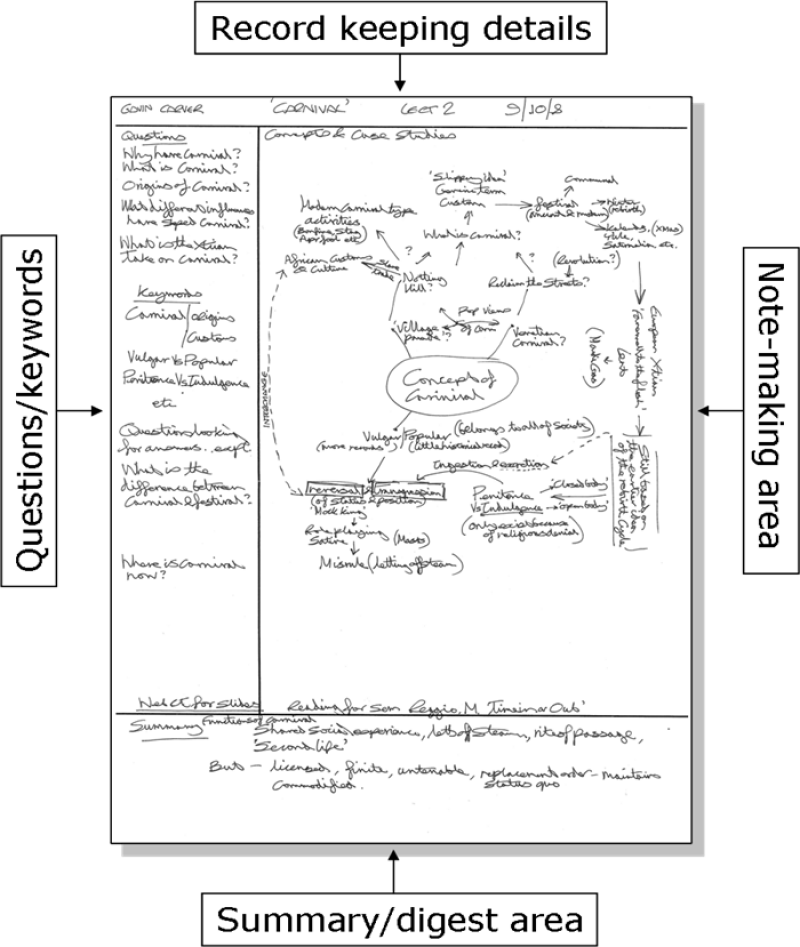
The note-making and record keeping areas are filled in while note-making, the summary/digest and questions/keywords areas completed later during reflection.
Using your notes
Notes are only as good as what you do with them, for example:
- Identify key words from lecture or seminar notes to undertake research for assignments e.g. search the library catalogue, for assignments.
- Use your notes to help you remember processes, a bit like a technical guide.
- Use notes taken from feedback given to you by tutors/markers as a checklist for improving your performance.
- Use your lecture, seminar and/or research notes as a reminder of module content and to help you revise for exams.





